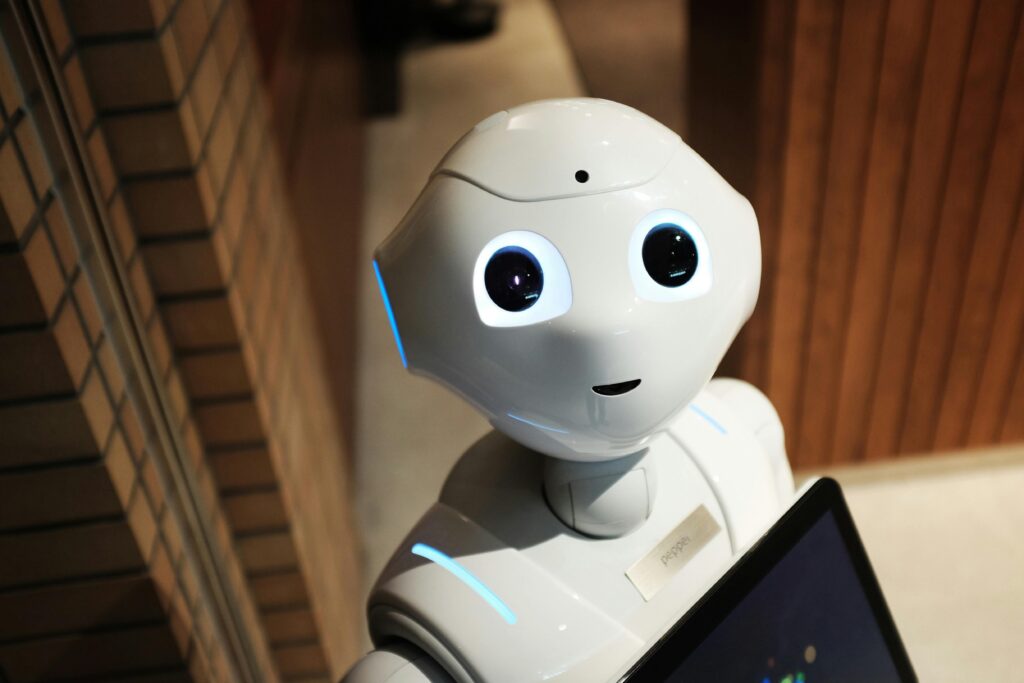[vc_row][vc_column][vc_column_text]
CyNexLink Blog • August 7, 2017
In front of a crowd of 19,000 attendees at InBound 2016, HubSpot co-founders Brian Halligan and Dharmesh Shah deliver a startling group of sales and marketing facts for the modern business to consider. We don’t usually plug the content we cover, but we would highly recommend tuning into the above presentation if you have not already.
“We need a Match.com for leads” – Dharmesh Shah, co-founder of HubSpot
The quintessential fact presented about the modern marketplace is this: supply outstrips demand (by a lot!). No longer is the startup with a new product competing for “inches on a four foot shelf”, instead they are competing for “millimeters on the infinite shelf of the internet”. Like any innovation or change in processes/technology, we are presented with a Faustian bargain.
Something is given and something is taken away. Startups and existing companies who have a product to offer face a much broader (indeed endless) spectrum of markets and venues in which to sell. The diversity of products on offer for buyers, especially where the internet is concerned, is huge. This makes the task of marketing and selling one’s product, amidst a sea of ever-increasing competitors, more and more difficult.
[/fusion_text][fusion_text]
It has become exceedingly difficult to outstrip one’s competitor, since the competition is so potent, varied, and ever-increasing. Just as we’ve had the democratization of entertainment (YouTube as the new TV) and the democratization of education (Online universities and community colleges as the new Oxford and Cambridge), we are today witnessing the democratization of competition.
On the positive side, starting a website, creating prototypes of applications, building brands on social media platforms, and more, are all hallmarks of the modern economy, and are all extremely fast endeavors to undertake. Contra the 1950s when raw marketing and manufacturing material required heavy capital, today a startup is born every minute due to the very low cost of operating.
Now the real treasure chest of insight at the InBound conference was Shah’s bold pronouncements about artificial intelligence (AI) and it’s relationship to the future of marketing. AI, he notes, will impact marketing and sales in a revolutionary way, similar to how Amazon revolutionized shopping. GrowthBot, a marketing chatbot created by Shah and his contemporaries, is the first attempt in revolutionizing the way marketing is done.
Things like lead routing, predictive lead scoring, email acquisition, and content recommendations will all dramatically improve based on an automated, learning engine, Shah explains.
Chatbots are already improving how people visit and interact with the internet. Plugins and automated engines fulfill a similar task. Chatbots act as a natural and intuitive cyber-guide for customers to search, understand, and buy goods.
Automation of this sort sits well with the overarching theme of the modern lifestyle: seamlessness and enhanced user-ability. Self-service checkouts at the market allow us to be in and out on our own accord, ATMs and mobile apps allow us to transfer money and pay bills without the slowing intermediary of another person.
Whereas some have thought that automated bots would act as a slowing intermediary of sorts – and this is a legitimate fear – very well designed bots actually trim the time a client spends on research and analysis, getting them out the figurative door with ease and comprehension.
The ‘marketing conversation of the future’, Shah notes, will become a human-machine conversation, always accessible and much more knowledgeable. “Machines,” Shah explains, “will be much better matchmakers, connecting leads to the perfect sales person. I believe that in the next few years we are going to have autonomous, self-driving, marketing automation.”
Existing marketing methodology consists of taking a host of marketing inputs and making decisions about those bits of data. In the future, this sifting through of data, sending out of optimal content, and more, will be initiated by machines who can perform such tasks at a much faster and finer pace.
In this new customer landscape, attracting buyers to one’s business is an increasingly herculean task. The huge amounts of data to sift through, the rapid change in software and technology, and the highly personalized customer interests make the accurate management of it all a near impossibility.
It’s about time we call on the aid of machines to manage and process the sea of information – as software has done with Big Data – so that marketers can get on with their more meaningful duties of productive conversation and interaction with customers.
Lastly, in case you are too busy to tune into the entirety of the InBound keynote speech, I transmit to you a host of helpful points collected from the speech which are tangential to the main thesis of this post:
- Adding value to customers is more important than extracting value from them.
- The best (marketing) content is CONTEXTUAL. Email and other media must be personalized, tailored, meaningful, and relevant. Gone are the days of bulk email spamming with pseudo-personal touches like adding a name to the introduction.
- Automate the buying process. In an era of hyper-multitasking, customers want self-service and a quick and seamless path to closing the transactions and going about their business.
- Accelerate content: combine paid marketing with content marketing.
- Present value before the purchase. In an era where supply outstrips demand, marketers must offer value BEFORE their prospects buy. Prospects are looking at dozens of similar products and services other than your own and traditional good reviews of your product don’t quite cut it anymore (although good reviews continue to be a staple).
Next Steps to Take
[/vc_column_text][/vc_column][/vc_row]




